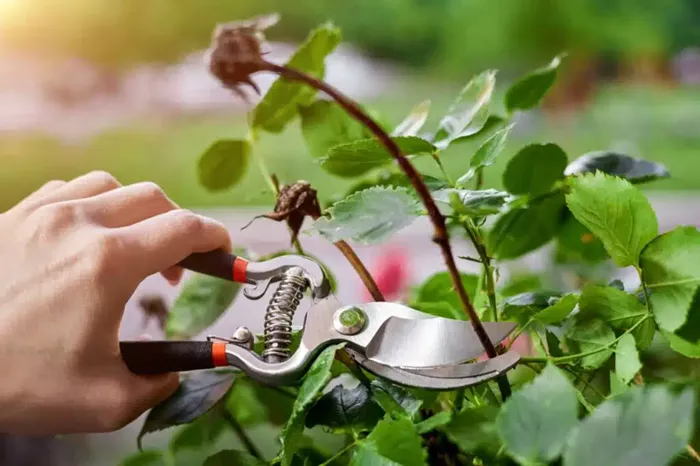Autumn Pruning: The Key to a Vibrant Spring Garden.
Gardeners know that autumn is crucial for preparing the garden to bloom in spring. One important task before October ends is pruning certain plants. Timely pruning stimulates growth and encourages abundant flowering. Below are five plants that should be pruned before the month’s end to ensure a colorful spring garden.
1. Everbearing Rose Bushes: Prepare for an Abundance of Blooms
Everbearing roses, known for flowering multiple times a year, need attention before the first frost. Pruning them before October ends helps set the stage for even more blooms when the weather warms.
How to Prune
Remove dead branches and overly long stems. Ensure the center of the bush is open to allow light and air to reach the plant.
Avoid severe pruning: A moderate approach is essential. Cutting back too much can weaken the plant before winter.
After pruning in autumn, the rose bush will focus on strengthening its roots over winter and emerge even stronger in spring.
2. Lilac: Prune for Fragrant Spring Flowers
Lilacs bloom on last year’s growth, so pruning them before winter is important. Delaying could impact their ability to flower in spring.
How to Prune
Remove faded flowers and trim the longest branches just above a bud facing outward.
Avoid cutting too much: Similar to roses, don’t prune too aggressively, as this can reduce the plant’s reserves for the winter.
A properly pruned lilac before October ends will reward you with an explosion of fragrant blooms in May.
3. Hydrangea: Preparing for a Spectacular Show
Hydrangeas are a summer garden staple, but autumn pruning is essential for next year’s flowering. Different hydrangea varieties require different pruning methods, so it’s important to know what type you have.
How to Prune
For common types like hydrangea macrophylla, only remove faded flowers and dead branches. Avoid cutting the main stems, as these will bear next year’s blooms.
Improve air circulation: Remove a few old branches at the base to strengthen the plant and promote healthy growth.
Light pruning before the frost will prepare hydrangeas to produce stunning flowers once spring arrives.
4. Early-Flowering Clematis: Encouraging a Burst of New Growth
Clematis is a delicate climber that can produce a cascade of flowers if pruned correctly. Early-flowering varieties should be trimmed before the end of October.
How to Prune
Cut back the stems that bloomed in spring, trimming them down to two or three strong buds near the base.
Encourage growth: Use a stake or other support to guide new shoots and prevent tangling.
By pruning now, clematis will channel its energy into the new shoots, ensuring a fresh wave of flowers next season.
5. Lavender: Shaping and Stimulating Next Year’s Blooms
Lavender, known for its aromatic bluish flowers, benefits from careful pruning before winter. Doing so helps maintain its shape and promotes fuller flowering the following year.
How to Prune
Cut back about one-third of the stems, being careful not to trim into the old wood, as this won’t produce new growth.
Preserve the shape: This moderate trimming helps lavender maintain its compact, rounded form while encouraging fresh growth.
Pruning in autumn ensures lavender will bloom again with dense flowers and a neat shape in spring.
Autumn Pruning: Setting the Stage for Spring
Pruning in the fall is vital for ensuring your garden comes to life with vibrant colors in spring. By taking care of plants like everbearing roses, lilacs, hydrangeas, clematis, and lavender before October ends, you give them the boost they need to thrive when warmer days return.
So, grab your pruning shears and get ready to set the stage for a breathtaking garden display next spring. With just a few thoughtful cuts, your garden will be ready to put on a spectacular show when the flowers bloom again.
Related topics:
- Complete This 10-Minute Task Now for Vibrant and Flourishing Peace Lily Flowers
- One-Third of Europe’s Plants Are at Risk from Declining Seed Dispersers
- Houseplant Business Thrives After Long Covid Struggles


